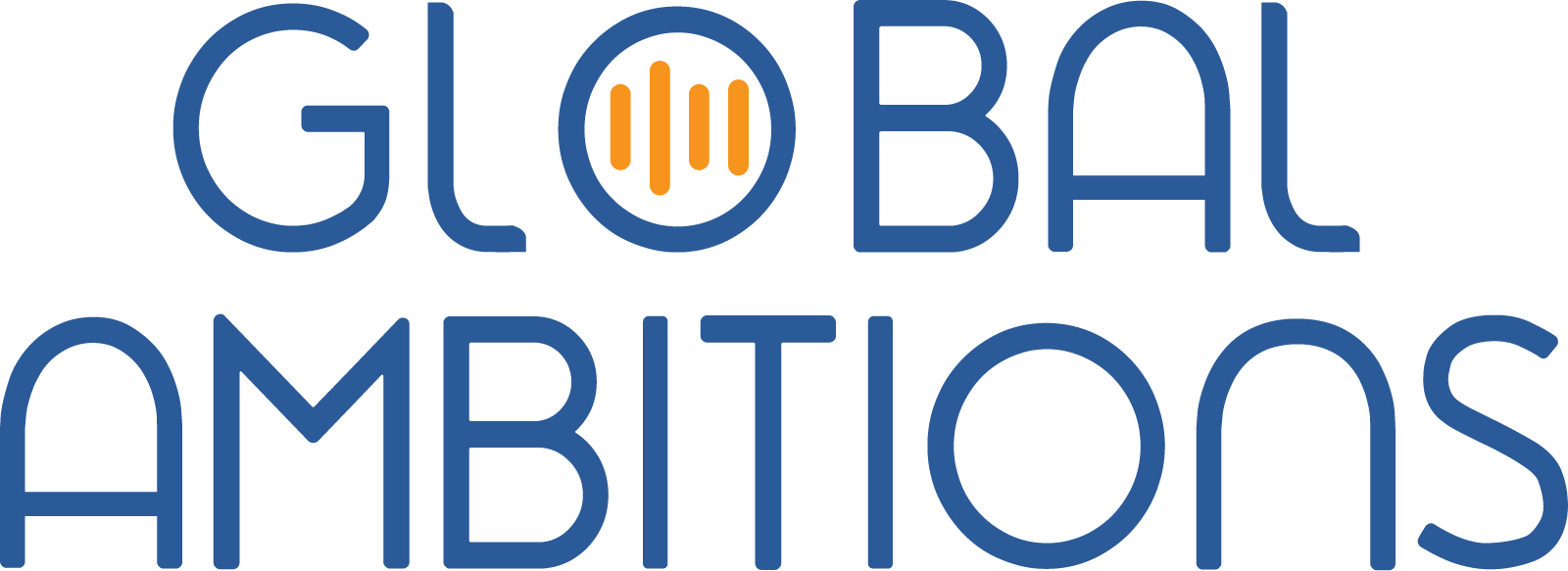With Jean-François Vanreusel, Director of Globalization at Adobe
Below is a full transcript of this episode
Antoine Rey 0:13
I’m Antoine Rey, and I will be your host today for this Global Ambitions podcast episode. And today my guest is Jean-François Vanreusel who is the Director of Globalization, at Adobe. The topic today is the localization function’s evolution from an internal to external focus at Adobe. Jean-François, welcome to the program.
Jean-François Vanreusel 0:35
Thank you so much for having me. It’s great to be here.
Antoine Rey 0:38
Great and we’ll dive straight in. You’ve been around for a while we can say, and so has Adobe, I guess you know in our little circle of localization people. So maybe you can tell us a bit more about the evolution of the localization function at Adobe since its inception.
Jean-François Vanreusel 0:56
Yes. So yeah, 23 years so it’s been a long ride.
Antoine Rey 1:02
Just a spring chicken.
Jean-François Vanreuselr 1:03
That’s right. So it’s been great for my own development and it’s been great to observe how Adobe has grown, of course as a much bigger company. When I joined Adobe we are about nearly 2000 employees and now we’re about 25,000 employees. Were, you know, at that time it was just a handful of key products that people know like Acrobat, Illustrator, Photoshop. But now the portfolio of course has grown much more and we probably have more than 100 products now that we deliver. So it’s been fantastic to work with the company, to really see how localization has evolved. We had to evolve with the products.
Antoine Rey 1:46
So can you tell us what that evolution looks like? To get close to the product team, I presume, internationalization and other different functions there?
Jean-François Vanreusel 1:55
Yeah, you know I think initially, it was interesting because I come upon a product like Photoshop with five, six, localization engineers, initially, and that was because, you know, the internationalization, was not optimal at that time. And then, over time, you know… initially you really offer what I would call a white-glove service. So you really have to allow each product team does it their own way a little bit.
Jean-François Vanreusel 2:22
But as you grow and become more scalable, you know, you really need to build proper standards. And that means that you’re going to develop a Standard toolset, a stronger infrastructure, standard practices with different formats, and so forth. And without pushing for those standards then it’s becoming really hard to support many product teams. So, I think, to the evolution we’ve leaned into building a much stronger infrastructure, but also pushing and promoting best practices to all the product teams so that it makes it easy on the localization team.
Antoine Rey 2:58
And do you, in this case, like when you’re working with those teams do you influence them as to what kind of standard they should be putting in place or which way does the wind go?
Jean-François Vanreusel 3:11
Yeah. Well, as I said initially, you know, we were maybe too nice with them. That’s maybe a lesson learned, you know. But after that one good program that we put together was the globalization report card. And it really provides a set of requirements that all product teams have to meet. And if they don’t meet those requirements they get a low score. And then what was very interesting with this program is that we of course displayed it to everyone, so that the Product Team doesn’t like to be the worst team in the room so there’s a little bit of a gamification effect here and competition among the product teams. And that has really helped all the product teams to raise the level of internationalization awareness and endorsing best practices, you know. So it is a great program of course.
Antoine Rey 3:58
Does that mean under a certain score they wouldn’t get localized at all or they weren’t ready for localization?
Jean-François Vanreusel 4:04
We didn’t go that far. Sometimes, we would still try to localize the products but we know it’s more painful. But certainly, there’s some negotiation going on with all the product teams to make sure that this score gets higher. And I don’t think any product was to the level where we couldn’t do anything. You still want to be a good partner with the product teams so it’s a fine line.
Antoine Rey 4:28
In an organization that is probably heavy on the product engineering side in terms of political power.
Jean-François Vanreusel 4:35
That’s right. I mean globalization, at least on our side initially at least and still, I think today is definitely seen as a service organization. When you support all the product teams. And so you want to make sure that they are happy.
Antoine Rey 4:51
Yeah, I had a conversation earlier today with Teresa Marshall and we talked about how do you not become a language ticketing system. How do you become the queen as opposed to Cinderella, for instance? I presume, along with that comes a lot of standardization we talked about but also a lot of automation with CI/CD as well?
Jean-François Vanreusel 5:18
Yes, so you know I think over the years… I mean it’s interesting because when I joined Adobe, we were dealing with spreadsheets. The translations were sent vis spreadsheets and so we had to build a much stronger infrastructure. And now we really have something which has been running for probably 15 years as a good platform.
Jean-François Vanreusel 5:39
And CI/CD really exacerbated the problem of scalability I guess going so you have to support many more releases and much faster. And that made it impossible at that point to have no automation. You don’t have a choice, you know. And I think what’s interesting with CI/CD, is the fact that now you can really integrate localization upstream in that CI/CD framework, so another way we call CI/CI/CD. And so anytime there’s a build process initiated by a core engineer, it will automatically trigger all the localization, leverage all the localization functions so that the engineer can get direct access to localized versions. And that’s necessary in this environment. Because now, you know, engineers are releasing features, if not on daily basis, at least on a weekly basis.
Antoine Rey 6:34
And beyond the evolution of the team in terms of size and the processes or technology, did you also have a change in the reporting structure? Did you remain part of the product engineering team?
Jean-François Vanreusel 6:47
At Adobe we’ve always been reporting, pretty much up to the CTO. And so we… not directly to the CTO these days, but it’s always been like a shared organization, you know where it’s really seen as a center of excellence if you will.
Antoine Rey 7:06
Because you’re supporting other groups as well right?
Jean-François Vanreusel 7:08
Yeah, we support other groups. So we support other product teams but are not part of a business unit. And I believe some, some companies may be in that situation where they are part of the business unit. For us, we support business units but report up to the CTO.
Antoine Rey 7:25
And so for years like you take an organization from a startup environment to a large multinational as you’ve described. And there’s a very much internal focus to bring that part of the organization to a very much optimized level of service and structure there. To then the second phase, where it’s moving to an external focus in helping clients and with their international data?
Jean-François Vanreusel 7:51
Yeah, there’s been an interesting transformation. So, you know, after a while, infrastructure and new internationalization for the products is not becoming a problem anymore. I mean we’ve resolved those issues and it takes maybe 10 years – 15 years to get there. After that, you know what you start to look at and how can you build translation features within your product to help your customers, you know.
Jean-François Vanreusel 7:55
And, for us at Adobe for example we built such features building features in AEM, so it will be Experienced Manager. And then some of our customers can trigger translation workflows from under the Experience Manager, and so we try to make it easy on them so that their content gets localized. That’s been an interesting experience for us.
Jean-François Vanreusel 8:36
And then there are other things like user forums, for example, we will have more like NLP features, which would maybe do spam filtering in different languages, or sentiment analysis features that are built into products. And the challenge for the globalization team, or these internationalization challenges for the globalization team is how they make those spam filters, sentiment analysis engines, how do you make them global? And to make sure that they don’t just work for English content, but they also work across all languages.
Antoine Rey 9:11
And in that case in that journey, do you involve external teams like the client themselves directly into developing those features or how do you decide which features and how you do this?
Jean-François Vanreusel 9:22
So definitely when you build your own translation workflows, so we’re interacting with a lot of clients, and that was actually fun for the globalization team because we don’t necessarily always interact with customers. So this was a great opportunity for us to interact with them. And then, for other features sometimes. Yeah, so when it was for the sentiment analysis functionalities, then you would have a client and you would get feedback from them, then understand maybe where the sentiment analysis engine doesn’t perform well and then how we can train it better so that we have like machine translation so it’s more customized to the type of content or they get. So it’s a little bit more customer-oriented approach.
Antoine Rey 10:08
So was that sort of an extension of your machine translation program that moved into the NLP and AI things for clients?
Jean-François Vanreusel 10:16
Actually, it was no literally, I would say it was two different teams, and it was just, I think at that time you know the NLP was becoming big and, you know, AI started to emerge a little bit. And so we started to see some use cases within the product where the English team was developing those NLP capabilities and we’re like okay how do we make sure that this will support the different languages.
Antoine Rey 10:43
And so that meant you had to develop also different relationships internally with the different teams that have access to the clients directly to work with them?
Jean-François Vanreusel 10:50
That’s right. Yeah. So you have to do that and get data, sometimes. You’re working with the clients you get data and try to see which languages they need to support, and then try to build the right engines for them.
Antoine Rey 11:05
Well listen, this is a very interesting evolution from an internal focus to really an externally driven focus towards your clients, and thanks for sharing this with us, I’m sure our listeners would be very interested. I will ask you one last question is that you’ve been on this program now you know the format, and the length of it is pretty short as well and quite actionable content for our listeners, is there someone that comes to mind, that would be beneficial for the listeners if he or she could join?
Jean-François Vanreusel 11:37
So who to nominate here… So, you know, I think there are a lot of people out there. I’m thinking, Jenny Kang, you know, who works at Veritas can be a great participant, I think. Jenny has done a lot of great work at Veritas as well so that’s the enterprise… a bit more of the enterprise world.
Antoine Rey 12:01
I don’t know Jenny so I would love to have her on the program and I’m sure like I trust you that she’s done some interesting things that hopefully she will be willing to share with us. Well listen, Jean-François thanks very much for joining our program. I’m sure our listeners will be looking forward to this episode with us, and we look forward to speaking with you again very soon.
Jean-François Vanreusel 12:18
Okay, thank you so much.

Jean-François Vanreusel
Director of Globalization @ Adobe




